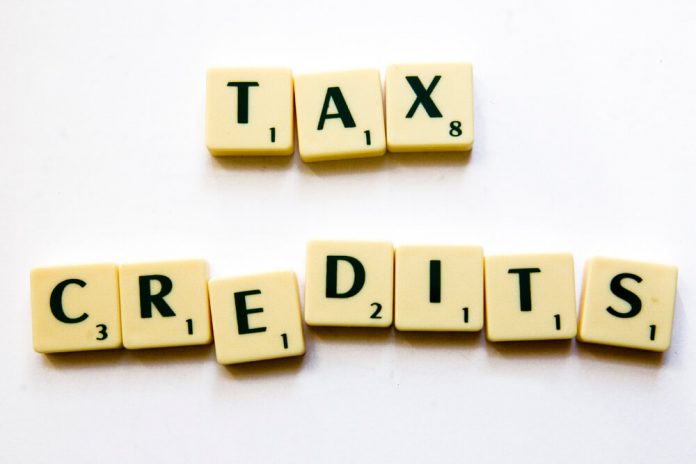This article is written by Rajendra Utpat, pursuing a Certificate Course in Advanced Corporate Taxation from LawSikho.
Table of Contents
What is a 26 AS statement
26 AS is an annual tax statement which shows tax deducted, collected at source and/or tax paid(such as advance tax, self-assessment tax). This statement was introduced u/s 203AA of the Income Tax Act 1961 vide Finance (No.2) Act 2004 and the second proviso to sub-section (5) of section 206C, read with rule 31AB of the Income Tax Rules 1962.
The objective of this statement is to provide the following information to the taxpayer against taxpayer’s PAN number:
- who has deducted /collected tax sources on his/her behalf.
- tax paid by taxpayers such as advance tax, self-assessment tax.
So that taxpayer can take credit of tax deducted/collected and/or tax paid while filing his/her income tax return.
Taxpayers can access, view and download 26 AS from income tax websites either through www.incometaxindiaefiling.gov.in or www.tdscpc.gov.in.
26 AS statement before the amended Finance Act 2020
Old 26 AS statement used to contain the following information:
- Basic information of taxpayer such as:
- PAN Number of taxpayer
- Current status of PAN
- Financial year
- Assessment year
- Name of the assesses
- Address of the assesses
B. Other information such as:
|
Sr. No |
Part No under old 26 AS statement |
Particulars |
|
1 |
Part A – Details of Tax Deducted at Source |
|
|
2 |
Part A1 – Details of Tax Deducted at Source for 15G/ 15H |
Same details as above except tax deducted and deposited amount will be NIL because of submission of form 15G or 15H by taxpayer. |
|
3 |
Part A2 – Details of Tax Deducted at Source on Sale of Immovable Property u/s 194IA/ TDS on Rent of Property u/s 194IB (For Seller/Landlord of Property) |
|
|
4 |
Part B – Details of Tax Collected at Source |
Here tax collected by the taxpayer as a seller needs to be shown. |
|
5 |
Part C – Details of Tax Paid (other than TDS or TCS) |
If a taxpayer has deposited advance tax, self-assessment tax etc then details such as tax amount, challan number, BSR code of bank, date of deposit etc needs to be given here. |
|
6 |
Part D – Details of Paid Refund |
If a taxpayer received refund of tax paid earlier years then details such as assessment year for which refund is given, amount of refund, amount interest on refund and date of payment of refund by income tax department needs to be shown here. |
|
7 |
Part E – Details of AIR Transaction |
Here high-value transactions are done by taxpayers such as mutual fund purchase, property purchase, corporate bond purchase etc. |
|
8 |
Part F – Details of Tax Deducted at Source on Sale of Immovable Property u/s 194IA/ TDS on Rent of Property u/s 194IB (For Buyer/Tenant of Property |
This is applicable where the taxpayer has bought the property and TDS has been deducted on purchase price by the taxpayer. |
|
9 |
Part G-TDS Defaults(Processing of Statements) |
It contains defaults related to processing of quarterly filed TDS statements. Here are the following information that needs to be given:
|
26 AS statement post amendment Finance Act 2020
Finance Act 2002 deleted section 203AA of the Income Tax Act 1961 and made radical changes in existing 26 AS w.e.f June 01, 2020. All taxpayer’s data will be available in a new Form 26 AS. It will contain part A and part B.
|
Form 26 AS |
Annual Information Statement (See rule 114-I) |
Financial Year |
||||
|
Assessment Year |
||||||
|
PART A |
||||||
|
PAN No |
Aadhar No |
|||||
|
Name |
||||||
|
Date of Birth/Incorporation |
||||||
|
Mobile No |
||||||
|
Email address |
||||||
|
Address |
||||||
|
PART B |
||||||
|
Sr. No |
Nature of Information |
|||||
|
1 |
Information related to tax deducted/collected at source |
|||||
|
2 |
Information related specified financial transaction |
|||||
|
3 |
Information related to payment of tax |
|||||
|
4 |
Information related to demand and refund |
|||||
|
5 |
Information related to proceedings |
|||||
|
6 |
Information related to completed proceedings |
|||||
|
7 |
Any other information in relation to sub-rule(2)of rule 114-I |
|||||
The government is yet to notify or clarify the specified financial transactions reportable in the new Form 26AS. The new form is in line with the budget 2020 announcement to facilitate compliance and correct payment of taxes.

Comparison between old 26 AS Statement and new 26 AS statement
|
Sr. No |
Point of difference |
Old 26 AS statement |
New 26 AS statement |
|
1 |
Nomenclature |
Annual statement of tax deducted or collected or paid |
Annual information statement |
|
2 |
Frequency of updation |
By 31st July following the financial year for which tax deducted or collected or paid |
Within three months from the end of the month in which information is received |
|
3 |
Communication details |
Name Address PAN No |
More details such as Date of birth/incorporation Registered email address Aadhar No |
|
4 |
Details of demand outstanding |
No such information exists except in case of TDS defaults |
Will provide details of demand outstanding so that taxpayer can verify whether demand shown in registered income tax account is correct or not |
|
5 |
Status of proceedings |
No such information exists |
Details of completed as well as pending proceeding will be provided so that taxpayer is aware |
|
6 |
Details of specified financial transactions |
AIR transaction were reflected in 26 AS |
Banks, mutual fund, institutions issuing bonds, Registrars and Sub Registrars are required to report high value transactions to income-tax authority. The same transactions will be reflected in 26 AS for transparency. It will help taxpayers in determining correct tax liability. |
Purpose of new form 26 AS
A comprehensive new form 26 AS will provide detailed information about the entire tax profile of taxpayers which will help honest taxpayers to file their income tax return accurately. It will desist taxpayers who conceal financial transactions in their income tax return. This was the purpose behind bringing out new form 26 AS as it is evident by press release dated 18.07.2020 by the department.
Implications of new form 26 AS
New form 26 AS will have a far reaching impact on taxpayers as follows:
- Now it will also contain Aadhar number, date of birth, email address and mobile number of the taxpayer which was not there in earlier 26 AS statement.
- New from 26 AS will not be a one time affair as it will be updated regularly within 3 months from the end of the month in which information is received. It will always live.
- It will be more comprehensive and have a complete profile of taxpayers.
- This statement will now be used as KYC as banks, financial institutions, customer, buyer and any other authority will demand form 26 AS from taxpayer while dealing with taxpayer to know about any major issues about taxpayer. This will make it difficult for taxpayer to hide tax related information with banks, financial institutions, any authority etc.
- Taxpayers need to be more cautious while filing their income tax return as they need to cross verify the information in form 26 AS with their books of accounts and/or documents which have been relied upon to prepare their return.
Conclusion
The income tax department has made radical changes in existing form 26 AS to provide an exhaustive tax profile of taxpayers including his/her high value financial transactions making it difficult for taxpayers to hide any information from the income tax department. Now taxpayers need to consider information contained in form 26 AS while filing return so that accurate return can be filed.
The income tax department is using new edge technology to gather information about taxpayers by way of gathering information with other authorities such as banks, financial institutions, GST departments etc, which will go a long way to ensure better and transparent compliance by taxpayers.
In the end, I would like to say that in the near future it will be interesting to see how new 26 AS will have an impact on the assessment income tax return filed by taxpayers.
References
Kanga & Palkhivala’s The Law and practice of Income Tax by Arvind P Datar.
Students of Lawsikho courses regularly produce writing assignments and work on practical exercises as a part of their coursework and develop themselves in real-life practical skill.
LawSikho has created a telegram group for exchanging legal knowledge, referrals and various opportunities. You can click on this link and join:
 Serato DJ Crack 2025Serato DJ PRO Crack
Serato DJ Crack 2025Serato DJ PRO Crack










 Allow notifications
Allow notifications



